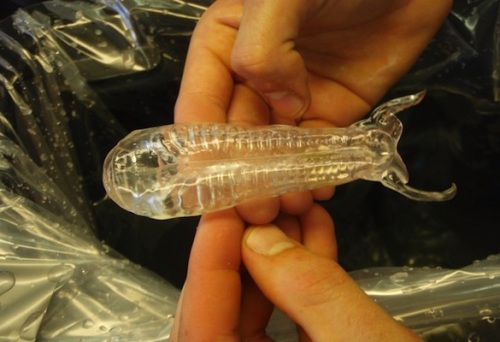Operators at Sweden’s Oskarshamn nuclear plant were forced to shut down one of its reactors when a huge cluster of jellyfish clogged the pipes that bring cool water into the facility’s turbines.

The jellyfish entered the pipes about 60 feet below the surface of the sea. They didn’t get past the plant’s filters or come anywhere close to the reactor, so there was no risk of there being a nuclear accident.
In all likelihood, it was the pressure from the filtration system — not coming into contact with the plant’s boiling water — that killed the jellyfish and caused the massive bunch-up.
The mess took two days to clean before the engineers felt comfortable restarting the reactor, which at 1,400 megawatts of output, is the largest boiling-water reactor in the world.

While the story might sound a bit surprising, it’s certainly not unique — in 2005, the first unit in Oskarshamn’s plant had to be temporarily turned off because of a jellyfish influx.
And just last year, California’s Diablo Canyon facility was forced to shut down its reactor after a wave of sea salp — a gelatinous, jellyfish-like organism — clogged its pipes.

The reason why this keeps happening is because nuclear power plants need a constant influx of water to cool their reactor and turbine systems. In order to accomplish this, plants are often built near large bodies of water.
Marine biologists say they would be none too surprised if more jellyfish shutdowns happen down the road.
“It's true that there seems to be more and more of these extreme cases of blooming jellyfish,” said Lene Moller, a researcher at the Swedish Institute for the Marine Environment. “But it's very difficult to say if there are more jellyfish, because there is no historical data.”
The type of jellyfish that caused this particular shutdown is known as the common moon jellyfish.
“It's one of the species that can bloom in extreme areas that . . . are overfished or have bad conditions,” explained Moller. “The moon jelly likes these types of waters. They don't care if there are algae blooms, they don't care if the oxygen concentration is low. The fish leave . . . and (the moon jelly) can really take over the ecosystem.”
One of the problems, Moller points out, is the lack of jellyfish monitoring; particularly in areas like the Baltic Sea. Data like this could help scientists figure out a way to better tackle this issue.
Story via: phys.org
Advertisement
Learn more about Electronic Products Magazine





